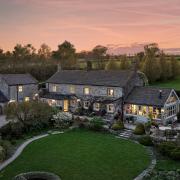One of the best loved market towns in the Yorkshire Dales welcomes a new wave of tourists.
Terry Fletcher reports
Settle is a town at the tourist crossroads. For decades it was known as the gateway to the Three Peaks, attracting walkers and the occasional potholer from the smoky mill towns and industrial cities of the West Riding and Lancashire. Today that stream of hikers has been joined by a new wave of visitors who are finding this market town on the banks of the Ribble has much more to offer than just the opportunity to get your boots muddy.
Yvonne Fortune, manager of the local Tourist Information Office, says: ‘Traditionally we have been very much a walking area but now people are coming for our history and culture and a whole range of other outdoor activities.’
One group which the town successfully set out to attract in recent years is rock climbers, who now actually find themselves an attraction in their own right. Traders in the town sponsored the development of the Castleberg rock face which overlooks the town centre.
They paid for safety bolts to be installed by volunteers from the British Mountaineering Council, who in turn cleared loose rock which was threatening to fall onto paths leading to the local beauty spot. Now, says, Yvonne, other visitors stand in the main street fascinated by the performance of the climbers and even walk up to Castleberg for a closer look.
But the main new group are cyclists with Settle at the meeting point of two contrasting long distance rides. The Way of the Roses covers 170 miles from Morecambe to Bridlington, mainly following quiet roads and country lanes from the Irish Sea to the east coast, while the Pennine Bridleway, which opened in June, runs for 205 mostly off-road miles from the Peak District to Cumbria.
The creation of the bridleway involved negotiating miles of new rights of way for cyclists and horse riders as well as building new crossings on the Ribble and other streams.
The result, says Mick Mounsey, of Three Peaks Cycles, has been to open up many miles of circular routes to add to the existing rides in the area. As a result thousands of riders are turning up in the town and the business is expanding at a time when many others are contracting.
‘The rise in numbers, perhaps increased because of the success of cycling in the Olympics, offset the problems from the poor weather last summer to keep us pretty busy. That was not just from the mountain biking, which has been growing steadily for a while, but also the Way of the Roses. In fact there are now so many people arriving that we have stopped booking routine repairs for a Friday because we know there will be people looking for emergency repairs and we want to be able to help them if we can,’ says Mick.
And it is not just the cycle workshops that are benefitting. Settle is one of the staging posts for riders crossing from coast to coast and pubs also find cyclists keep them busy. ‘It’s a bit like après ski,’ adds Yvonne. ‘They like to meet up and discuss how muddy they got.’
But not everyone wants to be quite that energetic and Settle has plenty to offer them, she says, from gentle riverside strolls and picturesque waterfalls to rides on the scenic Settle-Carlisle railway or the elaborate Italian mosaics and wood carvings to be found in the copper-domed chapel of Giggleswick School.
Just off the town centre is the magnificent Folly, a 1679 town house which today houses the Museum of North Craven Life while further up the hill is what is claimed to be the smallest art gallery in the country. The Gallery on the Green is housed in a phone box and 41shows range from miniature artworks to virtual art on screens.
Another big attraction, just at a time when outdoor activities can be winding down, is Settle Stories, a festival of tale telling which draws audiences from as far away as Scotland and London. Its director, Sita Brand, says it is a celebration of story telling for all ages, from Bedtime Tales for children who turn up in pyjamas with their teddies to international stories which last year featured a narrator from Jamaica. ‘We hold it in October, just when the main visitor season might be expected to be tailing off and just the right time for people to huddle round the fire and tell stories,’ says Sita.
‘It’s a very ancient human activity. We get a real mix of people and estimate that about 60 per cent are local and about 40 per cent from outside.’
That makes it another example of things that Settle locals enjoy thanks to their visitors. Amenities in the town far outstrip anything the local population of fewer than 3,000 could sustain themselves.
Joe Lord, the town’s mayor, at 24 one of the youngest in the country, says the visitors are also good news for the town’s young people. ‘For a long time people would move away for work but now more of them can stay and we are getting an increasing number of high end jobs. We just have to keep looking for new ways to attract visitors.’



























